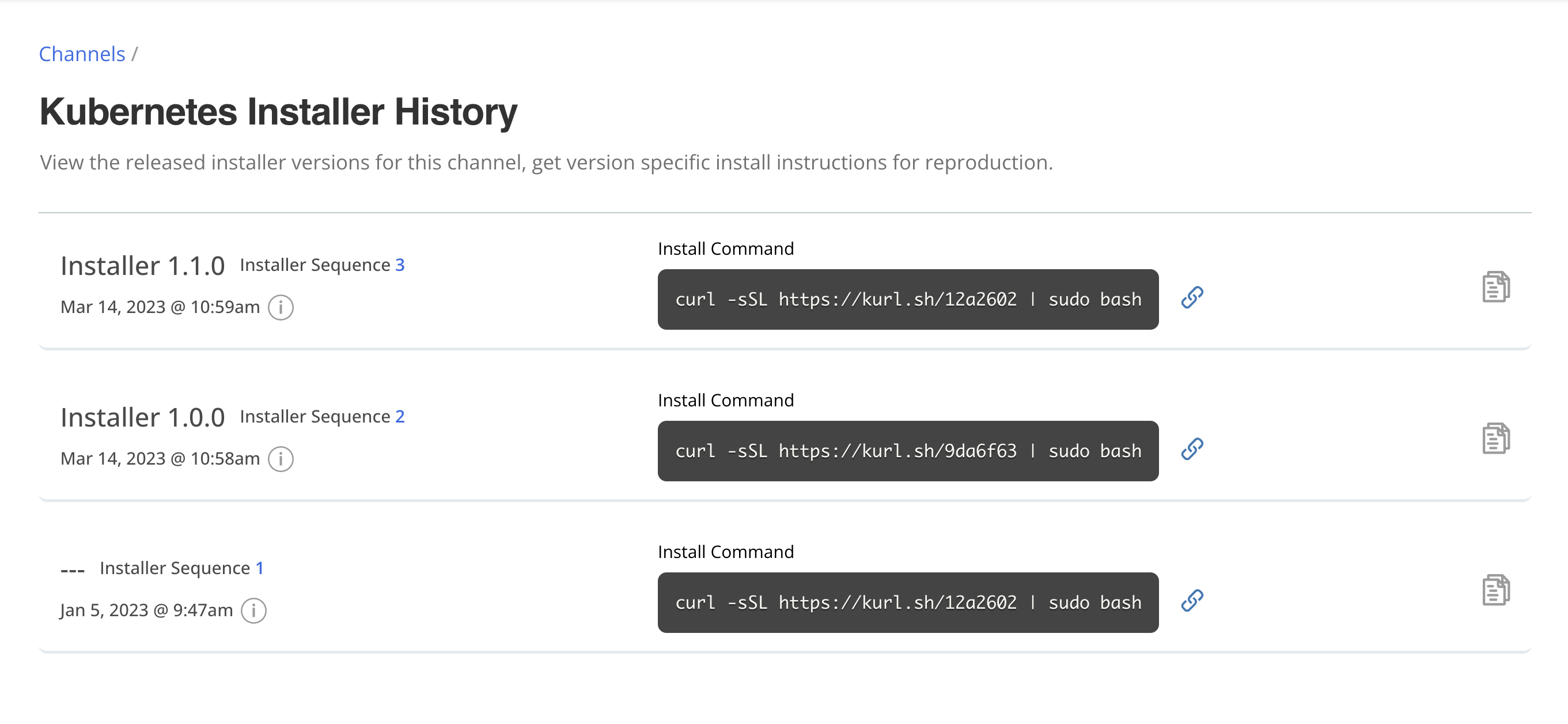Installer History
This topic describes how to access the installation commands for all active and inactive Kubernetes installers promoted to a channel.
About Using Inactive Installers
Each release channel in the Replicated vendor portal saves the history of Kubernetes installers that were promoted to the channel. You can view the list of historical installers on the Kubernetes Installer History page for each channel. For more information, see About the Installer History Page below.
It can be useful to access the installation commands for inactive installers to reproduce an issue that a user is experiencing for troubleshooting purposes. For example, if the user's cluster is running the inactive installer version 1.0.0, then you can install with version 1.0.0 in a test environment to troubleshoot.
You can also send the installation commands for inactive installers to your users as needed. One common use case for users to run inactive installers is when they are updating their cluster.
For example, users might be required to run the installation command for an inactive installer to upgrade Kubernetes by more than two minor versions. This is because the Kubernetes installer supports upgrading no more than two minor versions of Kubernetes at a time. For more information about the cluster update process for enterprise users, see Updating Kubernetes Installer Clusters in Enterprise.
About the Installer History Page
The Kubernetes Installer History page for each channel includes a list of all the Kubernetes installers that have been promoted to the channel, including the active installer and any inactive installers.
To access the Kubernetes Installer History page, go to Channels and click the Installer history button on the target channel.
The following image shows an example Kubernetes Installer History page with three installers listed:

View a larger version of this image
The installers are listed in the order in which they were promoted to the channel. The installer at the top of the list is the active installer for the channel.
The Kubernetes Installer History page includes the following information for each installer listed:
- Version label, if provided when the installer was promoted
- Sequence number
- Installation command
- Installer YAML content